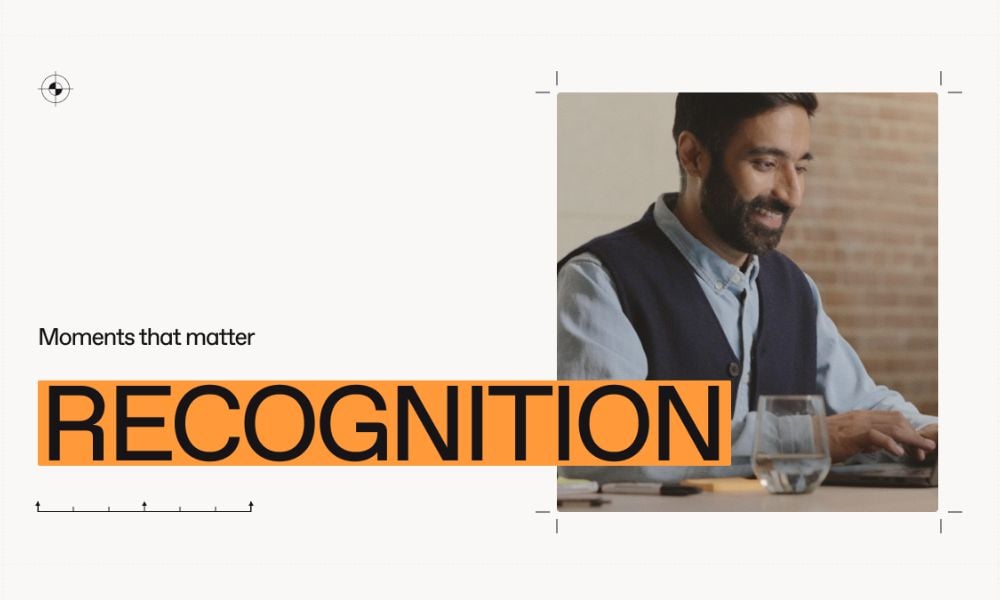
Workleap emphasizes the importance of employee recognition in enhancing organizational performance

This article was created in partnership with Workleap
Imagine starting your workday with a surprise celebration from your team: a banner at your desk, cheerful congratulations, and heartfelt messages acknowledging your dedication and hard work. How would that affect your motivation and sense of belonging? This is the power of strategic recognition — a seemingly small gesture with profound impacts on morale and engagement.
And this isn't just theoretical. Research shows that 37% of employees consider recognition the most crucial factor their manager or company can offer to inspire great work.
Organizations often overlook employee recognition as one of the most straightforward strategies to leverage their workforce's potential.
Research by the Brandon Hall Group revealed that companies prioritizing recognition multiple times per month are 41% more likely to see increased employee retention and 34% more likely to see increased employee engagement. Josh Bersin's study found that companies with a "recognition-rich culture" significantly outperform others, with the top 20% having a 31% lower voluntary turnover rate. Additionally, 75% of Workleap Officevibe respondents agree that they will be recognized if they do great work. Pair this with the fact that 92% of employees are likely to repeat a specific action if given recognition, and you have a recipe for steady high performance.
When recognizing employees, it's helpful to understand the different types of recognition and their distinct impacts. Whether celebrating major milestones or acknowledging everyday achievements, each form of recognition plays a role in cultivating a motivated and involved workforce.
Effective recognition in the workplace goes beyond simple appreciation; it enhances overall organizational performance in three prominent ways:
1. Engagement: Recognition increases employees' emotional and mental investment in their work, leading to higher levels of creativity, commitment, and job satisfaction.
2. Productivity: Appreciated employees are likelier to maintain high-performance levels. Recognition reinforces positive behaviors, improving efficiency and project outcomes.
3. Retention: Regular recognition builds loyalty and a sense of belonging, reducing turnover rates and retaining top talent.
Software company Typeform's Spontaneous Applause playbook encourages employees to clap for a colleague’s job well done, prompting the entire office to join in. This practice helps keep the work environment humble and supportive.
Biopharmaceutical company Merck employs over 60,000 people and has established a global recognition program called INSPIRE. This program allows employees to celebrate each other through appreciation messages, points, and cash rewards, fostering a culture of recognition and appreciation.
Data-platform company Aunalytics introduced Workleap Officevibe into its recognition program, significantly increasing employee engagement. The Good Vibes feature allowed team members to publicly acknowledge each other's contributions, fostering a culture of continuous appreciation.
HR leaders play a pivotal role in fostering a recognition culture. Key actions include:
Creating a balanced recognition program involves meaningfully celebrating wins across your organization. You want people to feel that their individual contributions are valued and to see how this is amplified when they work together. Here are some best practices to share with your team to support a culture of recognition throughout the workplace.
Understand how each employee prefers to receive recognition. Some may enjoy public praise, while others prefer private acknowledgments. During 1-on-1s, ask questions like how they like to celebrate achievements and what kind of messages light them up. This way, you can help make sure that recognition is meaningful and personalized.
Clearly state what impressed you and connect it to the employee's goals. For example, highlight specific actions and how they reflect the employee’s strengths and contributions.
Recognize achievements as they happen. Timely recognition shows you’re attentive and value ongoing efforts, not just final results. Take a few minutes, even during busy periods, to acknowledge hard work and dedication, which can be highly motivating.
Show how employees' work contributes to broader goals. Use metrics, client feedback, or colleague comments to back up your recognition. This helps employees feel connected to the organization’s purpose and see the tangible outcomes of their efforts.
Recognize behaviors that align with team values to reinforce a cohesive and values-driven team culture. For example, commend transparency and honesty during meetings to uphold these principles.
Incorporating recognition into your organizational culture is not just about boosting morale — it's a strategic move that can significantly enhance employee engagement, productivity, and retention. Tools like Workleap Officevibe’s Good Vibes can transform your recognition program, making it more genuine and effective. Start recognizing your employees today and see the positive impact on your team's motivation and engagement.